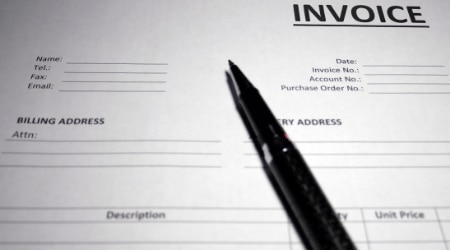As a small business owner, it is no easy feat to own and operate an independent company. As the owner of a business, your responsibilities are immense. Still, you also own everything connected to your business, except for liabilities owed to other people. You are in a unique position of ownership when it comes to equity, but what does that mean exactly?

What is equity ownership?
What is Owner’s Equity?
Simply put, equity refers to the worth of something. This means the owner’s equity represents the owner’s net worth of a business. It is the total value of a company’s net assets after all liabilities have been deducted.
How do you Calculate Equity?
To calculate a company’s worth, you need to know its assets and liabilities. The accounting formula required to do this is as follows:
EQUITY = ASSETS – LIABILITIES
The company’s assets (resources), minus liabilities (what the company owes others), is equal to the total net worth of the company, also known as owner’s equity. This is attributable to one, or multiple owners, depending on how the company is owned.
Owner’s Equity in a Balance Sheet
Owner’s equity of a company can be found along with liabilities on the right side of the balance sheet, and assets can be found along the left side.
Typically, the items that are included in the owner’s equity on the balance sheet are:
- Money invested into the business by the owner
- Profits of the business since its inception
- Minus money the owner has taken out of the business
- Minus money owed to others
What are Examples of Owner’s Equity?
Generally, equity begins with the original contribution to the organisation by way of assets such as cash or assets used within the business. For example, an owner may contribute $100 of cash and a machine that costs $200 for his product’s manufacturing. In that case, the company’s assets would be worth $300, and the equity would be $300 as well.
- Net income increases equity over time. Equity fluctuates as the business operations generate net income or loss. Net income is the excess amount of a company’s revenue over expenses for a specific period. If a business is making money, it is generating net income. Like owner investment, net income causes the owner’s equity in the enterprise’s assets to increase.
Reinvesting Earnings in your Business vs. Distributing Earnings
Capital reflects the sources of financing needed to acquire assets for a business. Equity and debt are two forms of capital.
Suppose the previously discussed entrepreneur who possesses $300 in equity decides to buy a second machine. However, he does not have the funds to do it himself, so he asks the bank for a loan. This loan is a debt that his company owes. Once he receives the $200 loan and buys the second machine, his assets increase to $500, but his equity remains the same at $300. At the same time, he takes on liabilities of $200.
With two machines, he generates twice the amount of operating profit, doubling his operating earnings, minus interest on the loan, allowing him to grow his equity account.
If the owner’s equity is the owner’s share of assets in a company, then the debt is owed by other people or is capital on behalf provided on behalf of a bank.
- A decrease in owner’s equity is when an owner or entrepreneur withdraws some earnings to support themselves while operating their business, such as their wage.
What is a Statement of Owner’s Equity?
A statement of owner’s equity reflects these increases and decreases in owner’s equity over a specific period. As noted above, this statement will reflect an increase in owner’s equity for the operating income generated by the business. It will also include the decreases from the distribution of wages to fund the owner’s lifestyle.
- Therefore, these financial statements record all contributions and incomes, as well as withdrawals and expenses of the company.
Types of Equity Ownership
- The legal organisation of a business is often driven by the number of parties owning the business. Sole proprietorship refers to a business owned by one person. In contrast, multiple owners of a company are legally organised as partnerships or corporations. Thus, the worth of a business reflects the aggregation of all (one or more) owner’s equity.
Sole Proprietorship
- This private form of ownership means that one person holds a company. The sole proprietor, or owner, has possession over all of the equity of the company.
Partnership
A partnership refers to a business with two or more owners/ partners. As a result, the owner’s equity appears as an aggregation of all partner’s equity. Each partner, or owner, possesses a separate capital account, including the partner’s investments, withdrawals, and corresponding share of the company’s net income / net loss from operations.
- Generally speaking, net earnings will be divided between the partners depending on the percentage of the business they own.
Corporation
Similar to partnerships, corporations are often formed with multiple equity owners. However, corporations differ from partnerships in that they provide legal liability protection to the owners to facilitate transferability of ownership interests. The multiple owners of a corporation are referred to as stockholders.
Stockholders, also known as shareholders, are the investors that have purchased shares of stock in a company, thus making them owners of said company. There can be between one and a limitless number of stockholders, depending on the corporation’s size. Therefore, the owner’s equity of a corporation is referred to as the aggregate shareholder’s equity.
Once the shareholders have been paid their dues at the end of an accounting period, what is left over is known as retained earnings, which can then be funneled back into the corporation to keep it growing.
FAQ
Key takeaways
As a business owner, it's important that you understand that equity represents the net worth of your business. You'll need to know what your assets and liabilities are before you calculate it, and you'll find your owner's equity on the right side of your balance sheet. There are different types of equity that you may come across depending on the type of business that you operate. Explore additional training courses for small business owners.











